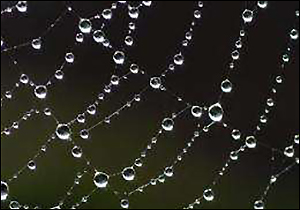Researchers develop ultra-tough fiber that imitates the structure of spider silk
8. 6. 2015 | Phys Org | phys.org
Professors Frederick Gosselin and Daniel Therriault, along with their master's student Renaud Passieux, are not related to Spiderman. Nevertheless, these Polytechnique Montreal researchers have produced an ultra-tough polymer fibre directly inspired by spider silk!
Spider silk: a thread with stunning properties
Three to eight microns in diameter but five to ten times tougher than steel or Kevlar: despite its lightness, spider silk has such remarkable elongation and stretch-resistance properties that humans have long sought to replicate it, in order to make products with those same characteristics. In large part, spider silk owes its exceptional strength - meaning its ability to absorb a large amount of energy before failing - to the particular molecular structure of the protein chain of which it's composed. The mechanical origin of its strength drew the interest of researchers at the Laboratory for Multiscale Mechanics in Polytechnique Montreal's Department of Mechanical Engineering.

Imitating nature with polymer fibres
Their project involves making micrometric-sized microstructured fibres that have mechanical properties similar to those of spider silk. "It consists in pouring a filament of viscous polymeric solution toward a sub-layer that moves at a certain speed. So we create an instability," said Renaud Passieux. "The filament forms a series of loops or coils, kind of like when you pour a thread of honey onto a piece of toast. Depending on the instability determined by the way the fluid runs, the fibre presents a particular geometry. It forms regular periodic patterns, which we call instability patterns."
A vast range of applications for future tough fibre composites
These researchers think that one day, there will certainly be composites obtained by weaving together tough fibres of the type they're currently developing. Such composites could, for example, make it possible to manufacture new safer and lighter casings for aircraft engines, which would prevent debris from dispersing in case of explosion. Many other applications can be foreseen, from surgical devices to bulletproof clothing to vehicle parts.
Read more at Phys Org
Image Credit: Phys Org
-jk-




